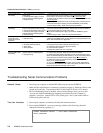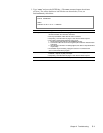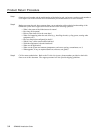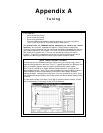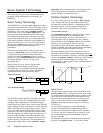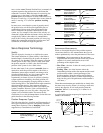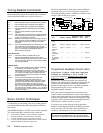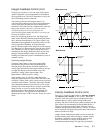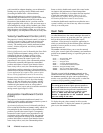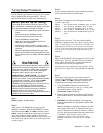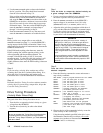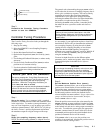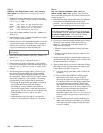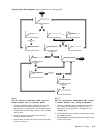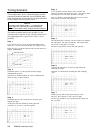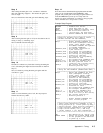
38
OEM6250 Installation Guide
gain is needed for adequate damping, you can balance the
tracking error by applying velocity feedforward control
(increasing the SGVF value—discussed below).
Since the feedback device’s velocity is derived by
differentiating the feedback device’s position with a finite
resolution, the finite word truncation effect and any
fluctuation of the feedback device’s position would be
highly magnified in the velocity value, and even more so
when multiplied by a high velocity feedback gain. When
the value of the velocity feedback gain has reached such a
limit, the motor (or hydraulic cylinder, etc.) will chatter
(high-frequency, low-amplitude oscillation) at steady state.
Velocity Feedforward Control (SGVF)
The purpose of velocity feedforward control is to improve
tracking performance; that is, reduce the position error
when the system is commanded to move at constant
velocity. The tracking error is mainly attributed to three
sources—friction, torque load, and velocity feedback
control (SGV).
Velocity feedforward control is directed by the Servo Gain
Velocity Feedforward (SGVF) setting, which is in turn
multiplied by the rate of change (velocity) of the
commanded position to produce the control signal.
Consequently, because the control signal is now
proportional to the velocity of the commanded position,
the controller essentially anticipates the commanded
position and initiates a control signal ahead of time to
more closely follow (track) the commanded position.
Applications requiring contouring or linear interpolation
can benefit from improved tracking performance; however,
if your application only requires short, point-to-point
moves, velocity feedforward control is not necessary.
Because velocity feedforward control is not in the servo
feedback loop (see Servo Control Algorithm drawing
above), it does not affect the servo system’s stability.
Therefore, there is no limit on how high the velocity
feedforward gain (SGVF) can be set, except when it
saturates the control output (tries to exceed the controller’s
analog control signal range of ±10V).
Acceleration Feedforward Control
(SGAF)
The purpose of acceleration feedforward control is to
improve position tracking performance when the system is
commanded to accelerate or decelerate.
Acceleration feedforward control is directed by the Servo
Gain Acceleration Feedforward (SGAF) setting, which is in
turn multiplied by the acceleration of the commanded
position to produce the control signal. Consequently,
because the control signal is now proportional to the
acceleration of the commanded position, the controller
essentially anticipates the velocity of the commanded
position and initiates a control signal ahead of time to
more closely follow (track) the commanded position.
Same as velocity feedforward control, this control action
can improve the performance of linear interpolation
applications. In addition, it also reduces the time required
to reach the commanded velocity. However, if your
application only requires short, point-to-point moves,
acceleration feedforward control is not necessary.
Acceleration feedforward control does not affect the servo
system’s stability, nor does it have any effect at constant
velocity or at steady state.
Gain Sets
An added dimension to the control techniques discussed in
the previous section is to group the gains into “gains sets”
that can be invoked to affect motion under certain
conditions. Gain sets may be useful for applications in
which you would like to invoke different gains a different
portions of a move profile, or at rest, or based on an
external process, etc.
The SGSET command allows you to save the currently
active gains, control signal offset (SOFFS), and maximum
position error (SMPER) setting, to a specified gain set (see
list below).
SGP.......... Proportional Gain
SGV.......... Velocity Gain
SGI.......... Integral Gain
SGVF ........ Velocity Feedforward Gain
SGAF ........ Acceleration Feedforward Gain
SGILIM..... Integral Windup Limit
SOFFS ...... Servo Control Signal Offset
SMPER ...... Maximum Allowable Position Error
The gain set saved with the SGSET command can be
enabled/recalled later with the SGENB command. Using
the SGENB command, the gains can be enabled during
motion at any specified point in the profile, or when not
in motion (see programming example below).
NOTE
The tuning gains saved to a given gain are specific to
the current feedback source (selected with the last SFB
command) at the time the gains were saved with the
SGSET command. Later, when you enable the saved
gain set, make sure that the gain set you
enable is appropriate to the feedback source
you are using at the time.
To display the gain values currently in effect, use the
TGAIN command. To display the contents of a particular
gain set, use the TSGSET command.



